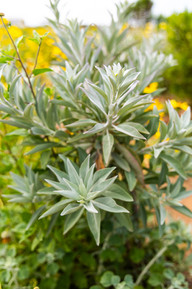Resilient Restoration Portal Preview and Hands-On Training
- Climate Science Alliance
- Jun 13, 2024
- 2 min read
Updated: Jul 22, 2024
After years of co-creation, the Resilient Restoration Portal was ready for its first preview. The two-day training, held on Kumeyaay Lands at the Sweetwater Marsh reserve, provided time to explore the research outputs carefully packaged in a user-friendly format. Maps and tools explored climate projections for a suite of native plant species to better understand future scenarios for restoration and stewardship.

Photo by Condor Visual Media
The Resilient Restoration Portal was debuted to the Tribal Working Group on April 17 and 18. The training was hosted on Kumeyaay land, in partnership with our U.S. Fish & Wildlife Service partners at Sweetwater Marsh in the San Diego Bay National Wildlife Refuge,
The Portal is an outcome of years of co-creation between researchers at the University of California Riverside and San Diego State University and Tribal Working Group partners for the Resilient Restoration project, funded by the California Strategic Growth Council's Climate Change Research Program. The research partners shared goals to promote Tribal resilience by creating tools and opportunities that preserve the ecosystems and plant species identified by Working Group partners.
Photos by Condor Visual Media
Over the course of two days, attendees heard from project contributors and learned how the project has evolved over the course of three years, the GIS (Geographic Information System) work behind the portal, and explored ways it can be used to evaluate potential ecological impacts and exploring stewardship scenarios. Attendees spent the first day diving into the portal and exploring the data and information. Vital feedback and guidance was provided for the projects priorities, vision, and goals.
Day two of the training provided a deeper understanding of the history and expected changes due to climate change. Attendees took their knowledge into the field and explored the spaces and vistas of Sweetwater Marsh.
Photos by Condor Visual Media
Attendees spent time learning about native plant species and their traditional uses and explored the plant restoration area. Attendees gave back to the land and, donning shovels and stirrup hoes, removed weeds to make way for native species to flourish.
Photos by Condor Visual Media
CNNCTS will take the work of the Resilient Restoration project and continue testing strategies on the land and integrate the Portal into the Tribal Hub of Knowledges virtual platform.
Learn more about CNNCTS at www.cnncts.org

Photo by Condor Visual Media


























